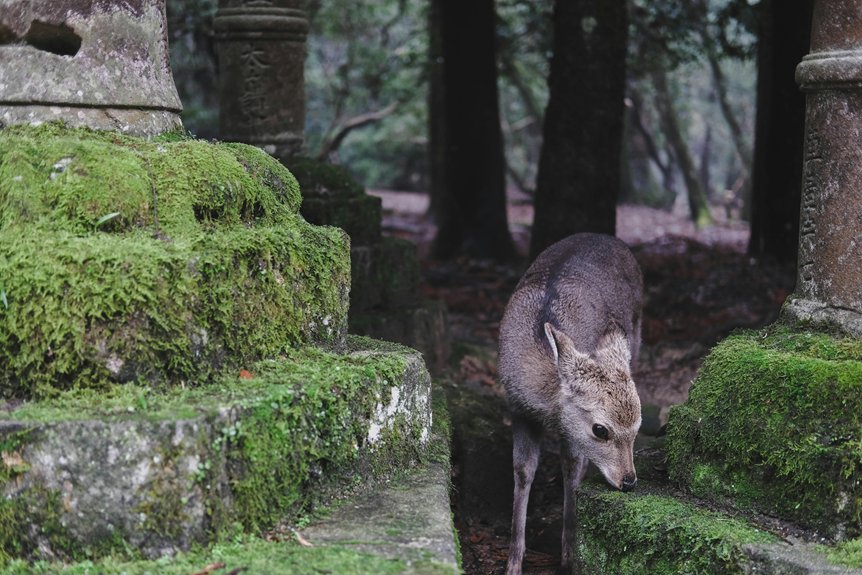When exploring Byzantine mosaics at archaeological parks, you’ll want to purchase a combination ticket, wear comfortable walking shoes, and arrive early for ideal lighting. Navigate sites strategically using maps, maintain a respectful distance from artworks, and use specialized photographic techniques without flash. Study iconographic elements carefully, understanding their symbolic meanings. Each mosaic tells a complex narrative waiting to be deciphered-your journey has only just begun.
Key Takeaways
- Purchase a combination ticket to access multiple mosaic sites efficiently and maximize your archaeological exploration.
- Wear comfortable walking shoes to navigate the expansive archaeological landscape and facilitate extended walking between mosaic locations.
- Utilize natural morning light to appreciate the subtle color nuances and intricate details of Byzantine mosaic artworks.
- Learn basic symbolic interpretations beforehand to deeply understand the religious and cultural narratives embedded within the mosaics.
- Respect preservation guidelines by maintaining a safe distance, avoiding flash photography, and observing designated viewing protocols.
Understanding the Historical Context of Paphos Mosaics
As the capital of Cyprus during the Roman and Byzantine periods, Paphos emerged as a pivotal hub for mosaic production, reflecting the rich cultural and artistic landscape of its time. When you explore the Byzantine mosaics at Paphos Archaeological Park, you’ll encounter an extraordinary collection of floor mosaics dating from the 3rd to 5th centuries AD. These intricate artworks reveal the sophisticated craftsmanship of skilled North African artisans who likely collaborated to create these remarkable designs.
The mosaics at Paphos Archaeological Park offer you a unique window into the complex social, religious, and cultural dynamics of Byzantine Cyprus. You’ll observe diverse subjects ranging from mythological narratives to geometric patterns and scenes depicting everyday life. Each mosaic serves as a meticulously crafted historical document, providing profound insights into the artistic traditions and visual storytelling of this pivotal historical period. By studying these Byzantine mosaics, you can trace the cultural exchanges and artistic influences that shaped Cyprus during its Roman and Byzantine golden age.
Navigating the Archaeological Park: Essential Visitor Tips
While planning your visit to the Byzantine mosaic sites, strategic preparation can considerably enhance your archaeological exploration. You’ll want to purchase a combination ticket that grants access to multiple mosaic locations throughout the Archaeological Park in Ravenna.
Navigate the dispersed sites efficiently by utilizing available maps and directional signage. Anticipate a 1-2 hour walking tour between significant locations like the Basilica of Sant’Apollinare Nuovo and the Arian Baptistery. Opt for comfortable walking shoes to facilitate comfortable movement across the archaeological landscape.
Maximize your visual experience by arriving early, when softer illumination accentuates the brilliant colors and intricate details of Byzantine mosaics. Consider renting an audio guide to provide scholarly context and analytical insights into each mosaic’s historical significance.
Strategic planning transforms your visit from a casual walk through ancient sites to an exhaustive, intellectually engaging archaeological exploration of Ravenna’s remarkable Byzantine artistic heritage.
Decoding the Symbolism in Byzantine Mosaic Art
Beyond the physical exploration of Byzantine mosaic sites, understanding the profound symbolic language embedded within these intricate artworks reveals a complex theological and cultural narrative. You’ll discover that Byzantine mosaics weren’t merely decorative; they’re sophisticated visual theological statements communicating religious doctrine through carefully constructed iconographic elements.
Christ’s representation, for instance, isn’t arbitrary. You’ll notice specific symbolic representations: a golden background signifying divine light, specific hand gestures conveying theological concepts, and color schemes communicating spiritual hierarchies. Saints and biblical figures aren’t randomly positioned but strategically placed to communicate spiritual relationships and theological principles.
Animal and plant imagery also carries deep metaphorical significance. Peacocks symbolize resurrection, while grapevines represent spiritual abundance. Geometric patterns aren’t just aesthetic choices but encode mathematical and cosmic symbolism reflecting Byzantine intellectual sophistication.
Photography and Preservation: Respectful Exploration Techniques
The delicate art of documenting Byzantine mosaics demands a nuanced approach that prioritizes conservation alongside visual documentation. You’ll need specialized photographic techniques that minimize potential damage while capturing intricate details. Low-impact lighting, non-invasive digital cameras, and carefully positioned tripods are essential tools for respectful exploration.
When photographing these archaeological treasures, you must understand fundamental preservation principles. Avoid direct flash photography, which can degrade pigments and delicate tesserae. Instead, use soft, diffused natural or museum-approved lighting that reveals mosaic intricacies without causing thermal stress. Maintain a safe distance, utilizing zoom lenses to capture fine details without physical contact.
Your documentation strategy should integrate careful metadata recording, including precise location, conservation status, and environmental conditions. Professional archaeologists recommend using calibrated color references and scaled measurement markers to guarantee scientific accuracy. By adopting these methodical approaches, you’ll contribute responsibly to the scholarly understanding of Byzantine artistic heritage.
Identifying Key Mosaic Locations Within the Park
Five primary Byzantine mosaic locations within the park demand meticulous scholarly attention, each representing a distinctive period and artistic paradigm of early Christian visual culture. Your exploration will navigate through architecturally important sites that encapsulate sophisticated artistic expressions from the 5th and 6th centuries.
| Location | Primary Mosaic Theme | Century |
|---|---|---|
| Basilica of Sant’Apollinare Nuovo | Christ’s Life Scenes | 6th |
| Arian Baptistery | Baptismal Imagery | 5th-6th |
| Neonian Baptistery | Apostolic Representations | 5th |
| Mausoleum of Galla Placidia | Celestial Iconography | 5th |
| Basilica of San Vitale | Imperial Portraiture | 6th |
Methodical observation reveals nuanced artistic techniques, theological symbolism, and chronological development of Byzantine mosaic traditions. Each location offers unique visual narratives, requiring careful analytical scrutiny. Your scholarly approach will uncover intricate details embedded within these remarkable architectural environments, illuminating complex representational strategies characteristic of early Christian artistic expression.
Interpreting Artistic Techniques and Materials
Countless Byzantine mosaic artisans wielded extraordinary technical mastery in transforming raw materials into complex theological narratives through intricate tessellation techniques. You’ll observe their meticulous craft involved selecting and arranging tiny cubes of stone, glass, and ceramic with remarkable precision, using natural adhesives like lime and mortar to secure each tessera.
You’ll discover these artists worked from full-scale cartoons, carefully layering each fragment to create symbolic imagery that transcended mere decoration. The intentional color selections and minute details weren’t random but carried profound theological significance, reflecting the intersection of Roman, Christian, and Eastern cultural influences.
When you examine these mosaics, particularly in spaces like Ravenna, you’ll appreciate how they were specifically designed for candlelit environments. The flickering light would animate the surface, transforming static imagery into a dynamic, immersive spiritual experience that engaged worshippers through visual storytelling and symbolic representation.
Connecting Byzantine Mosaic Stories to Cyprus’s Cultural Heritage
Byzantine artistic narratives extend far beyond their original contexts, finding profound resonance in Cyprus’s archaeological landscapes. When you explore sites like Kourion and the Church of Panagia Kanakaria, you’ll discover mosaics that aren’t merely decorative artifacts but complex cultural repositories encoding historical and theological significance.
These intricate mosaics represent a sophisticated visual language, synthesizing Greek, Roman, and Eastern artistic traditions. At locations such as the Limassol District Archaeological Museum, you’ll witness how Byzantine craftsmen transformed mundane materials into extraordinary narratives, embedding mythological and religious symbolism within geometric patterns.
The Orpheus Mosaic, for instance, exemplifies this rich interpretive tradition, where each tessera contributes to a broader cultural dialogue. By studying these mosaics, you’re not just observing art, but deciphering complex historical communications that illuminate Cyprus’s nuanced cultural intersections and spiritual expressions across centuries.
Frequently Asked Questions
Is Madaba Worth Visiting?
You’ll find Madaba an unparalleled archaeological treasure, especially if you’re fascinated by Byzantine art and early Christian history. Its world-renowned mosaics, particularly the Madaba Map, offer unprecedented insights into ancient cartography and regional cultural dynamics. The city’s compact Archaeological Park and historic churches provide a concentrated, immersive experience of intricate mosaic craftsmanship that you won’t encounter elsewhere in the Middle East.
What Is the Difference Between Roman Mosaic and Byzantine Mosaic?
OMG, art history buffs! Roman and Byzantine mosaics diverge markedly in style, technique, and purpose. You’ll notice Romans crafted naturalistic, secular scenes using diverse materials, while Byzantines created luminous, symbolic religious imagery primarily with glass tesserae. Roman mosaics adorned private spaces, whereas Byzantine mosaics chiefly decorated ecclesiastical structures, reflecting their distinct cultural and spiritual contexts through intricate, deliberate artistic expressions.
What Mosaics to See in Ravenna?
You’ll want to prioritize the iconic Byzantine mosaics in Ravenna’s churches. San Vitale’s imperial portraits of Justinian and Theodora are unparalleled, while Sant’Apollinare Nuovo’s saint processions offer narrative complexity. Don’t miss the Mausoleum of Galla Placidia’s celestial ceiling and St. Lawrence mosaic. The Neonian and Arian Baptisteries provide theological insights through their intricate decorative schemes, representing the city’s crucial artistic and religious heritage.
What Makes Byzantine Mosaics so Shiny?
You’ll find Byzantine mosaics’ luminosity stems from their ingenious use of glass tesserae with metallic backings, often coated in gold leaf. The artists’ meticulous placement and slight variations in tessera size and angle create a shimmering effect. When light interacts with these translucent, reflective elements, the mosaics achieve an ethereal, almost liquid brilliance that transcends traditional decorative techniques.
Conclusion
As you step into the Byzantine mosaic landscape, you’ll unravel centuries of artistic storytelling. These intricate stone narratives are more than historical artifacts-they’re windows into a complex cultural tapestry. By embracing scholarly observation and respectful exploration, you’ll transform from mere observer to cultural interpreter, bridging past and present through the luminous, tessellated fragments of Cyprus’s rich archaeological heritage.

Meet Natalie, who has lived on Cyprus for the last 10 years. She loves exploring the beautiful nature of the island, like quiet forests and untouched beaches. Natalie has lots of cool experiences to share. Join her as she talks about her adventures in Cyprus.

